

Compact Muon Solenoid
LHC, CERN
| CMS-HIN-12-011 ; CERN-PH-EP-2013-214 | ||
| Studies of azimuthal dihadron correlations in ultra-central PbPb collisions at $\sqrt{s_{NN}}$ = 2.76 TeV | ||
| CMS Collaboration | ||
| 6 December 2013 | ||
| J. High Energy Phys. 02 (2014) 088 | ||
| Abstract: Azimuthal dihadron correlations of charged particles have been measured in PbPb collisions at $\sqrt{s_{NN}}$ = 2.76 TeV by the CMS collaboration, using data from the 2011 LHC heavy-ion run. The data set includes a sample of ultra-central (0-0.2% centrality) PbPb events collected using a trigger based on total transverse energy in the hadron forward calorimeters and the total multiplicity of pixel clusters in the silicon pixel tracker. A total of about 1.8 million ultra-central events were recorded, corresponding to an integrated luminosity of 120 inverse microbarns. The observed correlations in ultra-central PbPb events are expected to be particularly sensitive to initial-state fluctuations. The single-particle anisotropy Fourier harmonics, from $v_2$ to $v_6$, are extracted as a function of particle transverse momentum. At higher transverse momentum, the $v_2$ harmonic becomes significantly smaller than the higher-order $v_n$ (n greater than or equal to 3). The pt-averaged $v_2$ and $v_3$ are found to be equal within 2%, while higher-order $v_n$ decrease as n increases. The breakdown of factorization of dihadron correlations into single-particle azimuthal anisotropies is observed. This effect is found to be most prominent in the ultra-central PbPb collisions, where the initial-state fluctuations play a dominant role. A comparison of the factorization data to hydrodynamic predictions with event-by-event fluctuating initial conditions is also presented. | ||
| Links: e-print arXiv:1312.1845 [nucl-ex] (PDF) ; CDS record ; inSPIRE record ; Public twiki page ; CADI line (restricted) ; | ||
| Figures | |
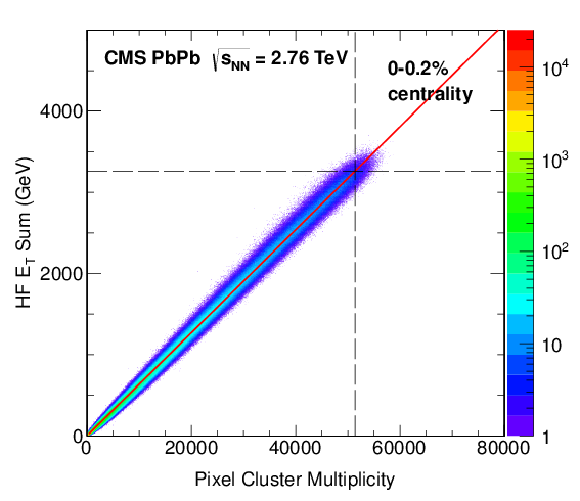
png pdf |
Figure 1:
|

png pdf |
Figure 2-a:
|
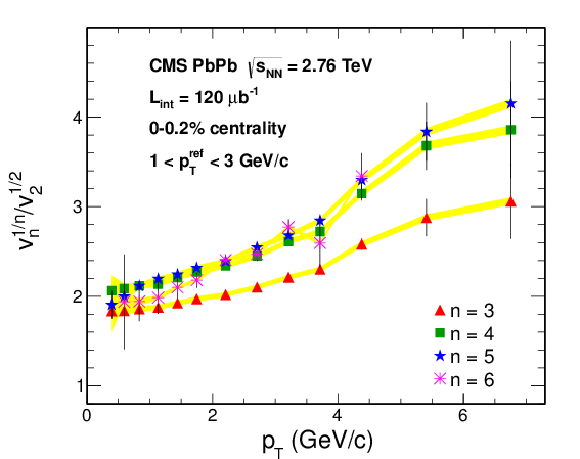
png pdf |
Figure 2-b:
|
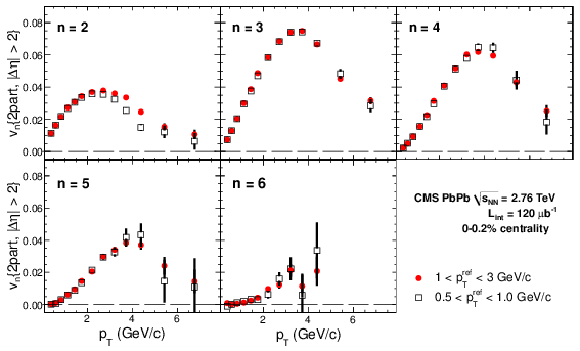
png pdf |
Figure 3:
|
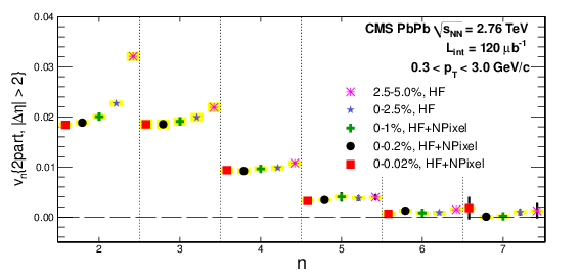
png pdf |
Figure 4:
|
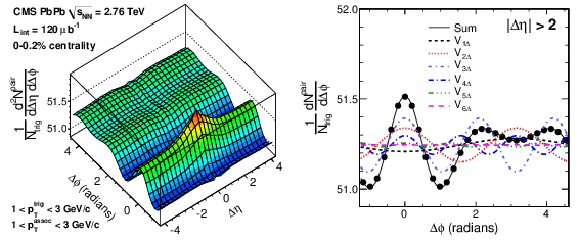
png pdf |
Figure 5:
|

png pdf |
Figure 6:
|
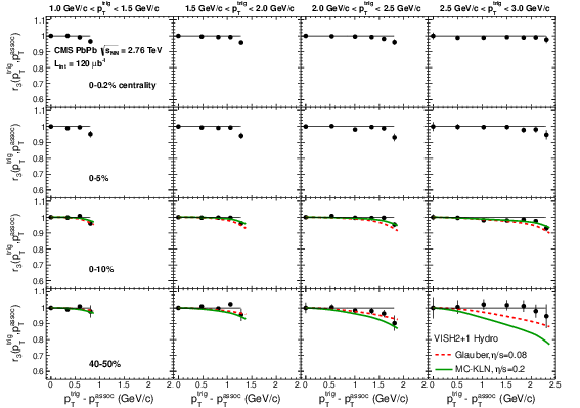
png pdf |
Figure 7:
|

png pdf |
Figure 8:
|

|
Compact Muon Solenoid LHC, CERN |

|

|

|

|

|

|